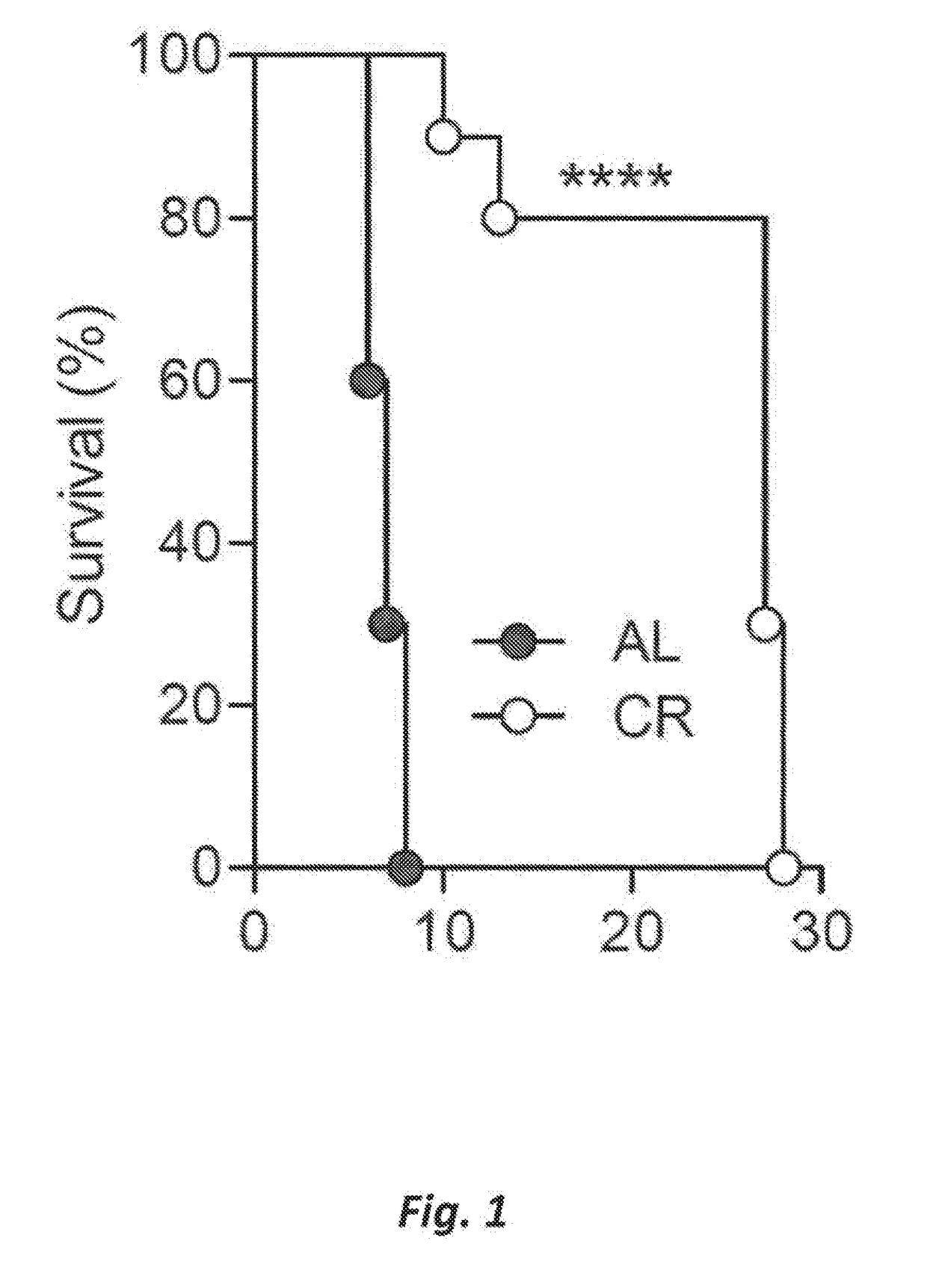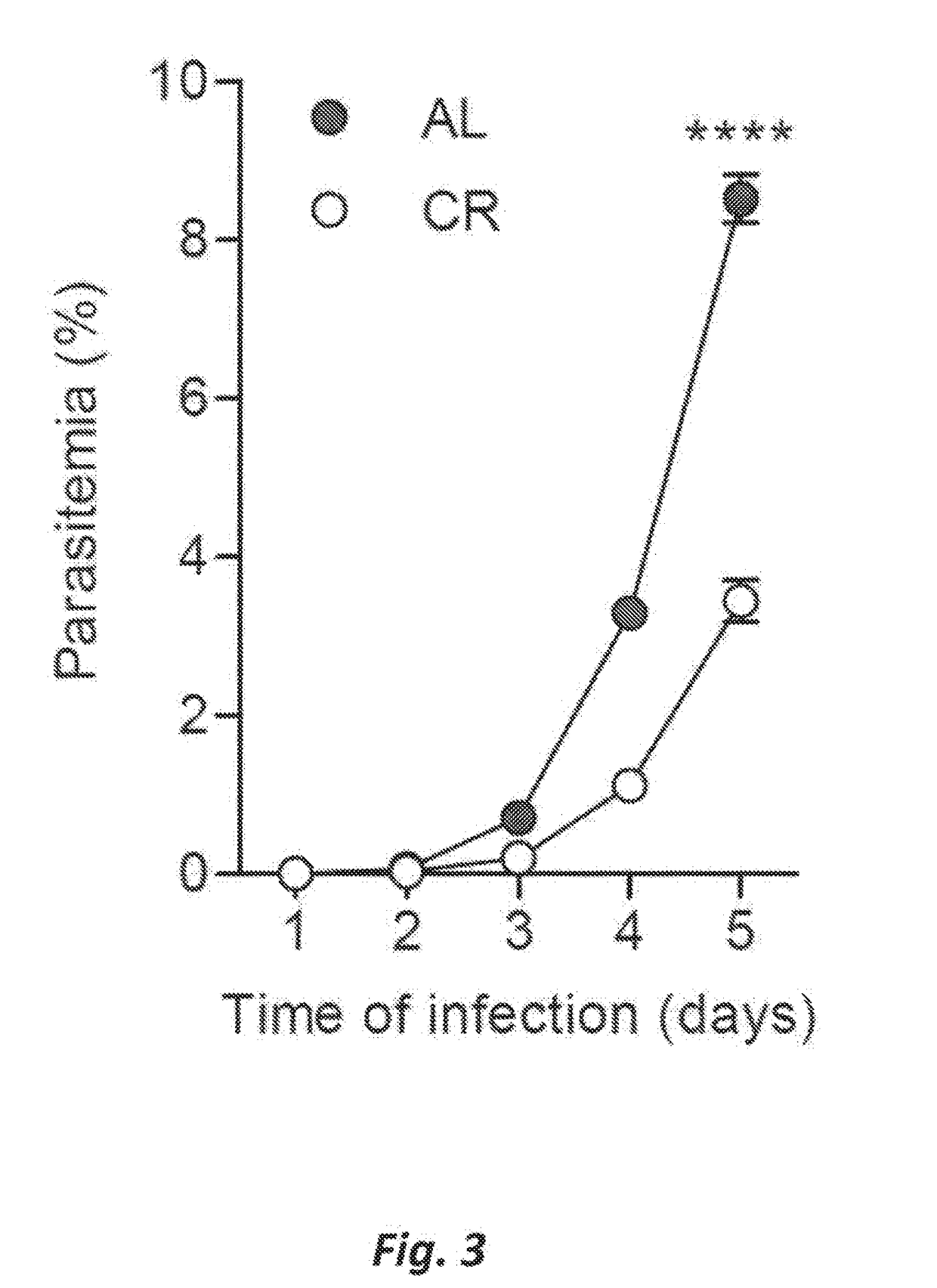Methods for attenuating parasite virulence
- Summary
- Abstract
- Description
- Claims
- Application Information
AI Technical Summary
Benefits of technology
Problems solved by technology
Method used
Image
Examples
examples
[0036]Example 1. Host diet affects survival and parasite load. C57BL / 6 mice (age 5-8 weeks; weight 20-28 g) were either allowed free access to water and food, or placed on calorie restriction (CR). Mice on CR were daily given 60-70% of the food consumed by the control group ad libitum (AL). Food intake in both groups was measured daily and body weights at least 3 times a week. Upon reaching 15-20% weight loss, the daily food allotted to CR mice or rats was adjusted to stabilize the lower body weights for the remainder of the experimental period. The mice were infected by intradermal (i.d.) injection of 5×103 freshly dissected P. berghei sporozoites (FIG. 2) or by intraperitoneal (i.p.) Injection of 106 P. Berghei-infected erythrocytes, which were obtained by prior passage in the C57BL / 6 mice (FIG. 3). The mice were housed three to five per cage.
[0037]Infection resulted in a significant reduction of liver stage infection, and suppressed asexual blood stage parasitemia in CR animals r...
PUM
| Property | Measurement | Unit |
|---|---|---|
| Composition | aaaaa | aaaaa |
| Energy | aaaaa | aaaaa |
Abstract
Description
Claims
Application Information
 Login to View More
Login to View More - R&D
- Intellectual Property
- Life Sciences
- Materials
- Tech Scout
- Unparalleled Data Quality
- Higher Quality Content
- 60% Fewer Hallucinations
Browse by: Latest US Patents, China's latest patents, Technical Efficacy Thesaurus, Application Domain, Technology Topic, Popular Technical Reports.
© 2025 PatSnap. All rights reserved.Legal|Privacy policy|Modern Slavery Act Transparency Statement|Sitemap|About US| Contact US: help@patsnap.com



